How to Imbed Inclusion and Diversity in Schools
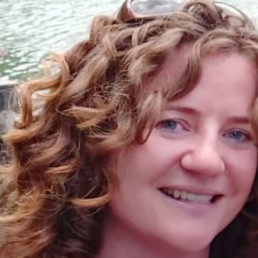
Written by Jess Gosling
An experienced international Early Years teacher, blogger and writer. She is currently writing a book for international teachers, 'Becoming an International Teacher'.
I am currently in my seventh year as an international teacher. My students, in the majority, are wealthy Taiwanese. In order to support their learning, I have researched my students’ socio-cultural experiences and their funds of knowledge. Funds of knowledge represent the bodies of knowledge they come to school with: including the information, skills, and strategies which underlie household functioning, development, and well-being (Hedges et al. 189). From these understandings, I know their experiences of diversity and inclusion are quite narrow. Therefore, my process of embedding these concepts begins early, at the start of the academic year. I present my class with ideas of inclusion in a way they understand and that is relevant to them. My starting points allow them to think beyond their own experiences and understandings.
Tackling gender roles
Stories help support concepts of fluid gender roles. From when I very first introduced ‘acting’ our class stories, I emphasized that a name was just a name or label. As there was no gender attached, a boy or a girl could represent a name. So, for example, when the story had a character named Daisy, I would ask ‘Who wants to be Daisy today?’ There were only one or two quizzical looks about this concept initially but now, due to frequent exposure, there is a total acceptance. I feel this is one way in which I can demonstrate how we do not need to be defined by a gender. Addressing these perceptions, rather than attempting to side-step them, is the way forward to transforming ideas.
Discussing cultural differences
When texts are selected carefully, they are able to illustrate a diverse representation of cultures. However, it is important these stories show children following both culturally ‘different’ activities as well as living ‘standard’, everyday lives, similar to the children. Following a book share, we discuss any perceived differences and similarities, encouraging questions. One carefully selected story was ‘Amazing Grace’. This text is about a little girl who wanted to be Peter Pan in a school show. But the fact she was black and a girl was highlighted by her peers, who were unkind to her and told her she could not be Peter Pan. My students were shocked by the peers, explaining that Grace was the best actor for the job. This story was particularly relatable to my children as they understood this concept well as we act in our own shows. I also highlight my own difference, as a fair-skinned person in Asia. I explained how often I am stared at, or my freckles commented upon. I revealed my feelings of sadness and how I do not like people to point out my differences.
Addressing disabilities
I led an assembly where I showed a ‘Sesame Street’ clip featuring a girl with Downs Syndrome. We talked about how she looked and spoke a little differently. The children hadn’t initially mentioned this, as they were more focused on what she had to say (or perhaps watching the ‘big screen’!) I raised the question; how would you feel if people always saw you as different? The children replied that she was just a girl. I said people may point out how she looks and sounds different and they were a little bit surprised by that. I think maybe they hadn’t come across it. By raising awareness of this, my intent was that they start to build upon concepts of ‘right’ reactions in these situations.
Expressing viewpoints
Our class has its foundations rooted in kindness. We allow for differences with our friends and identify how we have different likes and dislikes. I follow their questioning and views. Young children are very curious, discussing these ‘big’ concepts in a safe place is vital. Further, the children know that all ideas are appreciated. This is particularly the case if they express a contrary viewpoint. One example was when we viewed a photo of an African hut. A little girl responded to the photo saying ‘…ooh that looks so dirty’. As a class, we picked the idea apart. We did not judge or reprimand her for this comment but instead we explored her perception and reasons why a house may be built in that way. You can really help support a mindset change through calm discussion. I don’t believe in making children feel guilty for opinion, as they have developed these from socio-cultural experiences and from adults around them. The adult world does not give young children enough credit for how intelligent they are and how much they perceive and listen to others. We, as educators, need to treat them as the capable individuals they are, capable of a growth mindset. Yet, concepts of inclusion and diversity must be revisited constantly to embed the notion of equality for all.
References:
Helen Hedges, Joy Cullen, Barbara Jordan “Early years curriculum: Funds of knowledge as a conceptual framework for children’s interests,” Journal of Curriculum Studies 43, no. 2 (2011): 185–205, https://doi.org/10.1080/00220272.2010.511275.
Sesame Street “What Makes You Special?” 21st February 2015. 1.54-1.20 https://www.youtube.com/watch?v=LrPm7BasRBo
Why Are Pictures of Prophet Muhammed Forbidden in Islam?

Written by Zahara Chowdhury
Zahara is founder and editor of the blog and podcast, School Should Be, a platform that explores a range of topics helping students, teachers and parents on how to ‘adult well’, together. She is a DEI lead across 2 secondary schools and advises schools on how to create positive and progressive cultures for staff and students. Zahara is a previous Head of English, Associate Senior Leader and Education and Wellbeing Consultant.
I want to make it clear from the outset that pictures of the Prophet and revered figures in Islam are offensive to the Muslim community. My article below addresses the treatment of the event and school culture. This is a very sensitive subject and one I hope I have managed with respect and empathy.
The news surrounding events at Batley Grammar School has sparked a wave of outrage and controversy across Muslim communities and the media. For those of you who don’t know, a teacher was suspended pending an investigation into the alleged use of a cartoon of the Prophet Muhammad (pbuh) in his lesson, which has offended Muslim community members and students.
As a teacher, when I first heard this on the news I personally was not offended, I was intrigued. I was then perplexed as to whether I should be offended as a practicing Muslim. In any case, there are three things I want to clarify:
- Idolatry and depictions of the Prophet Mohammed and other prophets are prohibited in Islam as they are ‘’infallible’ and revered figures, and ‘according to the Islamic faith […] should not be presented in any manner that might cause disrespect for them.’ (Dr Azzam Tamimi to the BBC in 2015);
- A teacher has every right to spark learning and engagement within the parameters set out by the UK teaching standards, their experience, knowledge and understanding of their students;
- In no way are death threats and aggressive behaviour a reflection of Islam.
WHY ARE PICTURES OF PROPHET MUHAMMAD FORBIDDEN?
This is a pretty fully loaded question and let me start by saying the accuracy here is only as good as Google and the references I have sought. Also, as a practicing Muslim, I don’t feel comfortable tagging archives and historical documents of Islamic images here.
There are apparently no transparent references as to why pictures of Muhammad are forbidden in the Quran. However, in the Hadith (quotes, events and experiences from the life of the Prophet Muhammad (pbuh)) it is said that the idolatry and the creation or worship of images is prohibited – it is deemed disrespectful as stated above and the only One able to create is Allah (swt). Of course, Islam dates back to the 7th century, and there are plenty of historical artefacts and pictures where you will often find the Prophet with no facial features. From the beginnings of the Ottoman Empire (13th century) to colonialism tearing through the world, there were fewer and fewer depictions of the Prophet too – whatever way you look at it, whether it be from the perspective of power, history or religious instruction, this is followed by a large majority of Muslims if not all and it dates back to religious scriptures and historical narratives.
I haven’t answered this question in its entirety as it’s not something I know enough about. However, it is something I respect as a practising Muslim, just like I respect the principles and truth of all other faiths too. I may not agree or follow them, but I respect them and I would never want to knowingly offend anyone or any faith. And, I really don’t think the teacher in question did either.
TEACHING AND LEARNING THE UNCOMFORTABLE
In previous blog posts and in the many conversations I have had since launching School Should Be, I am constantly reminded of the glaring gap in our education system when teaching the uncomfortable. Whether that be racism, prejudice, classism, sexism…in this case, religion, adults seem to have a deafening problem with students learning about the uncomfortable. It’s interesting; when I googled ‘learning the uncomfortable’ I was presented with a range of articles from Forbes, Harvard Business Review and a few more all concluding that ‘being uncomfortable’ is the key to success.
These articles all link uncomfortable learning to a new skill and pushing outside the ever-cliched and demonised ‘comfort zone’ (which, I love by the way). As a teacher and a student, I’ve realised the uncomfortable isn’t a new skill, it’s the courage to address, discuss and explore taboo and socially accepted norms that remain unchallenged because of fear.
What this teacher tried to do was teach and enable learning. What the community are doing is in defence of their faith, perhaps triggered by a history of damaging criticism. What the media did was present an angle of Islam tinged with negative bias.
What the school choose to do is up to them – however, it just goes to show the world how multifaceted the role of a school is in the lives of young people, teachers and communities. And as a previous Head of Department and experience on senior leadership, I really do empathise with the decisions they are having to make.
I think back to my time in teaching and the many roles I’ve held in education (including this one at School Should Be). I taught a wide variety of things: To Kill a Mockingbird, Of Mice and Men, a variety of Shakespeare, Austen, Chaucer, alongside writing to argue, writing to persuade, creative writing….all the fun stuff, some might say. There is a great deal in all of these texts that is offensive, but how we manage and respond to that offence is another question entirely – death threats and aggressive behaviour isn’t the answer, unlearning, compassion and allyship is.
It is a teacher’s responsibility to be mindful of the different beliefs in their class. It is also one massive feat.
Should this teacher maybe have checked with parents beforehand, addressed it with their line manager, considered the consequences of displaying this image, and the context of recent events? Probably. Do they deserve to be threatened, cancelled and potentially used as a scapegoat? Absolutely not. There are now several articles reporting on this event and I’ve read through a few too many of them. What I’ve concluded is that this teacher is sincerely apologetic, did not mean to be provocative, in no way wanted to offend anyone and if anything, wanted to encourage a healthy debate.
Was the teacher’s use of the image offensive?
For Muslims, yes. As a practising Muslim student and parent however, I would’ve liked to have been consulted and perhaps discussed the images as opposed to presenting them on the board. Bottom line is we all make mistakes in our professional careers and I hope this teacher is supported by their school and given the chance to learn and reflect on this experience. Islam is a forgiving and compassionate religion; in my opinion, this teacher deserves that.
NEGATIVE BIAS AND ISLAM
Death threats, aggression and threatening behaviour are in no way reflective of the Islamic faith or any faith for that matter. Someone once said to me, religion is only as good as the people who practice it. I think that’s a very weak argument, but one that is valid as it just comes from a different lived experience. As a practicing Muslim, the truth of my religion is more powerful than any individual or ‘people’ – those choosing to practice it in ill faith, or in my opinion, use the religion to front their aggression are the problem, not the religion.
Unfortunately, the images of the protestors and the response from community leaders have been presented in a negative light. I won’t lie, when I first saw the video footage and images, I was disheartened by yet again another media debacle, which only serves to fuel the negative bias around Islam. However, I can equally sympathise with the protestors – and I really hope you have the patience to reserve judgment until the end of this piece.
My earliest recollection of my religion in the media is the event of 9/11. I’m not going to go into detail, but ever since several reports, films and the like have always presented Islam and Muslims in a rather negative light. I’m not going to explain why or how, or go into the nuances, because frankly, it’s exhausting to constantly justify the way a POC feels – or in this instance, a person of faith. I’m not somebody who is easily offended, but I am someone who cares and is deeply compassionate. If you are too, then please understand that although the threatening behaviour is absolutely wrong, the hurt and anger around the events at the school come from a place of historical exhaustion and pain.
Many Muslims may have seen the teacher’s actions as another way of presenting Islam in a negative light. Why that image? Why not just a discussion? Why were parents not consulted? I am in no way condoning the threatening behaviour, but I think if we all want to live in a peaceful world (the idealist in me can only hope) we have to at least try and see where people are coming from and figure out a way to live in harmony with different viewpoints – not continue to antagonise and polarise.
When it comes to schooling, teaching and learning, approaching education with an open mind, without fear and I guess, with the knowledge you may cause some form of discomfort and controversy is important. Is it possible to cause offence? Of course! However, being offended and how you respond to offence is something to learn too.
I don’t want students to be scared of asking questions, to rely on social media for knowledge or to live in fear of their opinions. If anything, it’s important to just approach all discussions from a place of empathy, compassion…and sometimes (if not most), sheer common sense.
References:
https://www.bbc.co.uk/news/magazine-30814555
https://hbr.org/2019/08/learning-is-supposed-to-feel-uncomfortable
https://nypost.com/2010/01/10/jihad-jitters-at-met/
Please join our upcoming SSBChat event to discuss how to have conversations about religion in the classroom via Zoom.
School Should Be is a platform to encourage students to find their voice and discuss topics and issues they should and want to be learning at schools. It is a place other educators and professionals can share lessons and learnings they think should be centralised in schools too.
Neurodiversity
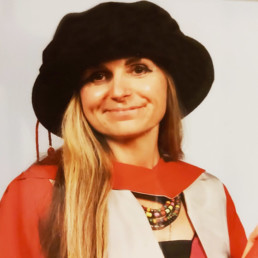
Written by Dr Sarah Chicken
Senior Lecturer in Education and Childhood at UWE, Bristol where she teaches across undergraduate and postgraduate programmes.
I am a senior lecturer in the Department of Education at an English University where I have worked for seventeen years. I also have a diagnosis of dyspraxia. Dyspraxia or Developmental Coordination Disorder (DCD) is a complex neurological condition which affects the messages between the brain and the body impacting on movement and cognition. Instead of a message going from A to B, for someone with dyspraxia, it can take a detour from A to X, Y and Z ( in no particular order) before making the journey back to B. This can be exhausting!
An important issue is that others may not understand how substantial some challenges can be; for example, I have been an educator for decades, teaching students from 3 to 73 across diverse social, political and cultural contexts; I have a PhD and a range of Master’s level qualifications so when I find difficulties filling in forms, driving a car, finding my way around university systems and the world in general, this can seem perplexing to others. However, a ‘spikey’ learning profile, (where there are significant discrepancies between the things that someone is good at and those that they struggle with) is a key feature of a neurodiverse profile. In my own case, psychometric tests indicate a large gap between my verbal reasoning at the one end of the scale and my processing speed and working memory at the other end of the scale.
This often feels like I have a fantastic computer which has been ill-matched with some rather outdated software and I spend a lot of time feeling out of synch. This can impact on my physical coordination (my dancing is legendary for all of the wrong reasons ) and my speech and cognition which sometimes is not quite connected. When I am tired or anxious, I can stumble over words or words can tumble out of my mouth in ‘my incoherent soup’. This anxiety-inducing prospect can lead to remaining quiet in large group situations despite having lots of ideas. On other occasions, I end up talking over the top of people as I can’t quite find the right place to come into a conversation and this can appear impolite.
Many neurodivergent people have issues with the processing of sensory information; whilst I can hear words in busy environments, I am not always sure if I have fully processed the meaning. Harsh lighting is challenging for me and can cause eye disturbances which feel as if I am looking through a kaleidoscope with pieces of the picture all jumbled up. Unfortunately, this is often the case in many parts of my working environment including shared social spaces.
At the same time, I am determined and driven (pardon the pun), whilst it took me 17 years to pass my driving test, I got there in the end! This is because I have limited spatial awareness or depth perception, whilst I can physically see space, I can’t quite ‘feel’ or judge if my car ( or body) can fit. On the odd occasions that I have been brave enough to drive to work, students have found great amusement as I have tried to park my car – I don’t blame them, I need a runway!
To return to my computer analogy, the cognitive pressure of too much multitasking can feel like having too many tabs open at the same time and I start to slow down – now throw into the mix the mismatch between my computer and out- of-date software and there is a danger that I could shut down altogether. Since my diagnosis I realise that this has implications for my work and life and I am far more successful when I can really concentrate on a small range of activities ( I am a details-person) rather than being spread thinly across many.
At the same time, my dyspraxia can be viewed as a gift and a superpower. It offers a unique perspective of the world leading to creative and ‘outside of the box’ thinking when I am in environments where I feel ‘safe’ and valued. I have a good sense of humour; I have to see the funny side of often tripping over and bumping into things and jumbling up my words. Like others with dyspraxia, I have a ‘stick with it ‘attitude, I am solution-focussed, analytical and very empathetic. I am fortunate to be in a job where I can draw on these strengths to design and deliver teaching, learning and research opportunities which engage and inspire and most of all where I am able to celebrate the wonderful range of diversity seen within the human race.
Engaging With Diversity – Giving Pupils a Voice
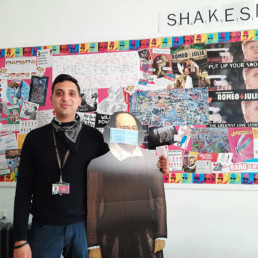
Written by Gaurav Dubay
Head of English at King Edwards VI Handsworth Grammar School for Boys and Evidence Lead in Education.
The need to diversify
In 2010, the then Education Secretary, Michael Gove, announced a number of sweeping educational reforms – particularly in English – where the likes of Byron, Keats and Dickens would firmly be re-rooted and restored to their original veneration within the English educational system. The changes were designed to bring rigour and improve students’ grasp of English Language and Literature. Whilst I firmly welcomed the ambitions, I feared that the texts I loved – ‘To Kill a Mockingbird’, ‘All My Sons’ and ‘Shards of Memory’ – would be relegated to the lower leagues of what I like to call The Reading League, and thus deny countless students access to texts that they could both learn from and relate to.
Since that time, my suspicions have been confirmed by countless reports, and, most recently, The National Literacy Trust concluded that the majority of ethnic minority students do not ‘see themselves in what they read’ (Best et al, 2020). The findings of reports like the one aforementioned, as well as our own internal evidence, meant that we – in a multi-ethnic school – needed to work on developing curriculum diversity. The words of Fletcher (2005) resonated with us where the assertion is made that learners’ voice creates ‘empathetic learning environments that value diversity and multiple perspectives.’ We made the choice, therefore, to put our students at the forefront of the discussion on curriculum diversity.
What did our pupil voice dialogue look like?
MHS (Mentally Healthy Schools) argues pupil voice is an effective mechanism through which we ‘can create meaningful change…better academic outcomes’ and perhaps most importantly facilitates ‘a sense of empowerment and inclusion’. There is a wealth of information we can refer to in order to successfully implement pupil voice. However, we strongly felt that we needed our students to feel a sense of ‘empowerment’ through the process. We, therefore, framed our discussion using the following format:
- Explored, discussed and defined the meaning of diversity.
- Explored what worked well in our curriculum.
- Explored what didn’t work well.
- Develop pragmatic solutions.
Finally, in order to value all voices, students were chosen to contribute through randomised selection.
The outcomes of the discussion:
- Defining diversity – It was clear from the onset that our students believed that the celebration of our unique identities – race, religion and gender – was to feature as part of our definition. However, there was a growing sense, through the process, that uniqueness and equality could not be separated; each unique experience needed to be equally understood and equally valued. To that end, our students phrased our department’s diversity vision as ‘An acceptance, recognition and celebration of our unique identities. Each unique experience – regardless of race, religion, sexuality and the like – are to be celebrated. No voice will be silenced and all voices will be respected.’ Perhaps the most enlightening experience was the unanimous feeling that the word ‘tolerance’ was not to feature as part of the definition.
- WWW – Students strongly agreed that the curriculum, particularly at Key Stage 3, exposed them to diverse voices. One student felt he would have ‘been none the wiser about the tensions traditional African women face had it not have been for The No1 Ladies’ Detective Agency’. Others appreciated the opportunity to discuss topical issues with regards to race through their study of transactional writing in year 11 and ‘Othello’ in Sixth Form.
- HTD – The discussion did, however, expose flaws that need addressing. Whilst the success of English learning lies in the variegating offerings of texts and genres studied, it was strongly felt that the discussion needed to extend beyond the English curriculum and many confirmed the findings of Johnson (2010) who felt that diversity broadens beyond the school curriculum and needs to be part of a school’s ethos. Our pupils also felt more needed to be done to ‘educate’ – not ‘punish’ – those who ‘might get it wrong’.
- Feeding in to our DDP – The findings of our discussion have since been implemented in to our DDP (see https://www.handsworth.bham.sch.uk/curriculum/subjects/english/). It will be our students, however, who will be tasked with evaluating our effectiveness and they, too, will play an important role in successfully building a diverse curriculum that regularly seeks to explore the voices of those who are often marginalised.
- Wider school – following the findings, students will discuss their findings further with the School Council.
What we learnt:
Time! This is perhaps the most important lesson we learnt as a leadership team. Discussions about diversity cannot simply be timetabled and forgotten about. We needed to extend our discussion not once, not twice, but three times (and if we could have discussed more, we would)! There was a lot that needed to be said, digested and explored.
Personally, however, I felt that our students would not come up with solutions that were pragmatic. I was well and truly proven wrong! Solutions were not only pragmatic, but insightful, empathetic and empowering. TP Due argues, ‘Diversity should just be called reality. Your books, your TV shows, your movies, your articles, your curricula need to reflect reality.’ We are not there yet – but we are on a journey to get there.
For further information, please follow us @english_hgs
Personal Twitter handle: @GauravDubay3
Bibliography:
- Best, Clark and Picton, I. (2020). ‘Seeing Yourself in What you Read: Diversity and Children and Young People’s Reading in 2020’. NLT – UK.
- Fletcher, A (2005). Meaningful Student Involvement: Guide to students as partners in school change. Soundout www.soundout.org/MSIGuide.pdf
- Johnson, LS (2010). ‘The Diversity Imperative: Building a culturally responsive school ethos’. Intercultural Education. 14. p 17 – 30.
- Mentally Healthy Schools: https://www.mentallyhealthyschools.org.uk/
Think Equal – Equality Education in Action

Written by Ben Mearhart
M.Ed. in Educational Leadership and in his 10 years as a senior leader developed practices and curricula which progressed teaching, learning, outcomes and personal development to ‘Outstanding’ levels.
Intent
As a joint-Headteacher of a forward-thinking primary school I was always on the look-out for initiatives which spoke to the heart of what I most value – the children’s actual experience and equipping them for leading rewarding lives. Think Equal’s social and emotional literacy programme achieves this and so much more.
I can’t think of anyone I know who wouldn’t benefit from enhanced social and emotional literacy. From engaging the compassion that it can grow, for ourselves and everyone around us. What do you do when you feel completely lost? When you feel you’ve made a terrible mistake? How do you support yourself or others when they feel this way? How do you treat people as they would like to be treated?
This, to my mind, is the true work of a curriculum, of a school; namely to cultivate an authentic social and emotional literacy which is steeled with a depth and breadth of real world understanding that together can make the world we leave for our children better than the one we inherited.
Implementation
You may of course learn such things through trial and error. Or, to be more certain of success, you can embrace social and emotional literacy as a golden thread of your learning and understanding as a student, of your pedagogy and support as a teacher and of your vision and impact as a leader. The mission, content and execution of Think Equal’s programme achieves this too. Bold claims I know, but treat those seeds of doubt to a quick glance at Think Equal’s Committee of Advisors and Academic Partners to see how this might be possible.
From Understanding the World to Personal, Social and Emotional Development – and all the fertile vertical and horizontal links between and beyond – Think Equal’s programme can instantly enhance your curriculum, pastoral care and ultimately the love and cohesion that unites your school community. And at a time when children’s minds – at their most plastic – can be so ripe to engage with what so many adults, myself included, can find paralysingly-awkward and difficult to negotiate in reality. What is true fairness? How are we different and how are we similar? How do I show you that I genuinely appreciate you as a human being? The programme largely enables these developments through consistently engaging and inspiring stories and activities.
Diverse narratives:
At age- and stage-appropriate levels, the children explore and embrace vital concepts like equality, emotion and race within the comparative safety of the experiences and choices of a beautiful range of characters.
Emotional intelligence in action:
Their discoveries are then reinforced with the help of the programme’s carefully scaffolded and inclusive activities so that they are ready to respond when reality calls.
Impact
And oh the difference! At its most essential, we found that our planning for Personal, Social and Emotional Development for the year was pretty much covered. Done.
More importantly…within weeks we saw elevated levels of kindness and consideration. We saw children often reserved and tentative now emboldened and asserting their values. We saw children who knew themselves and their friends with deeper understanding and confidence, who had normalised the range of emotions we experience but not the negative actions they can drive.
Children who, self-confident and upright, were happier, more engaged, independent and much more likely to approach conflict with courage and solutions(!). The positivity rippled through our staff and to home too. These days there is rightly much talk of a mental health and well-being crisis (pre- and post-Covid 19). In times of joy, sorrow and everything in between I don’t think we can expect more than to ride those waves to the best of our ability. Pursuing the Think Equal programme enhances that ability and not as a reactive solution – a bolt on – but as a pro-active and living, breathing and growing reality.
Using Students Voice to understand Diversity

Written by Roma Dhameja
Secondary Vice Principal responsible for Teaching and Learning with a particular passion for Student Voice and teaching students Business, Economics and about Money.
Google ‘What is Diversity’ and you will see it defined as the ‘process of involving people from a range of different social, ethnic, gender, sexuality backgrounds.’ However, the way we often portray it is through a lens of polarisation. White or non-white. Male or Female. We know life is more complex than that. I, as a woman in her 30s of Indian heritage, cannot speak for every woman with that background and in that age bracket. Our experiences vary. It also doesn’t mean I have nothing in common with a middle-aged white man.
This doesn’t mean that we shouldn’t endeavour to ensure diversity in our board rooms/staff body. It means we have to pay closer attention to experiences rather than the way we classify ourselves, and that’s why I want to focus on the element of ‘involving people’ in the above definition. Because unless the communication channels are open, our understanding of unique experiences and similarities will remain stunted.
With this in mind, I have loved conducting student voice activities throughout my teaching career. Our students’ backgrounds affect the way they engage with education. I know this, I have experienced this. At age 4, I joined the British education system with English as my third language and not entirely fluent in it either. Rather than celebrate my trilingual abilities, I was always innately aware that having not mastered English first I was seen to have a disadvantage. This became more apparent as I studied English Literature at A Level and whilst my peers could reference Greek Gods I had a wide variety of Hindu God’s I could refer to with an impressive array of powers but none that were going to make me understand references in the poetry required on the syllabus.
Often this lack of exposure to Western cultural references can be seen as a gap, something to fix and fill, and I understand that. After all, we have to prepare our students to pass exams and wrestle with the demands of the English language. But we also have an opportunity to unpick what they come to the table with.
I recently spoke to a group of students with English as an Additional Language and was in awe at the experiences not only they, but their parents had. One spoke to me about his parents being refugees from Pakistan and how his dad had obtained a degree in the Netherlands, which is where he was born and had then moved to the UK at eight. When I asked him of his experience moving to the UK he spoke about how he was going to one up his dad by making sure he did his A Levels in the UK, degree abroad and then an MA in another country. To him the world was his home, he just needed some time to figure out society in each country. He was a global citizen.
I’d gone to speak to these young people to look at home/school communication. Many of the questions had been asked before.
- Do your parents receive the letters we send home?
- Do they read them?
- Is it ok to send them in English or would you prefer them in a different language?
Yes, Yes English is fine, had been the response.
Digging a little deeper, it became apparent that the students were reading the letters going home to their parents. When asked if they read everything, their initial reaction was yes, of course. When I asked them to translate a paragraph for me in Urdu, it became apparent they would skip some bits. This made the school simplify the language of their home communication further, with students giving feedback.
I learnt a lot that day about the way we communicate with our young people and their parents. I learnt a lot about ensuring that we know who we are writing for. I learnt a lot about how many students are happy to talk about their background if they feel comfortable, and we are willing to listen and celebrate the richness of it.
On another occasion I learnt a lot more about why some of our students from diverse backgrounds were not applying to Oxbridge despite having the grades than I ever would sitting making assumptions. I won’t tell you why because their reasons may not be the same as those of the young people not applying at your school. And that’s what we need to unpick, all of us, through regular, consistent student voice activities. What I did love however is how many of them were making the right choices for them, taking into account their culture and the lifestyle they wanted to lead.
We also need to be careful about the way we interpret student experiences. For instance, students’ parents may not attend parents evenings because they have no experience of the British education system and may send older siblings, uncles or aunts instead. In these instances you can have a very engaged extended family. How do we work with that? The cultural experiences of our young people can be very rich and we have to ensure we are not, at some level judging them as good or bad when they may just be different.
Listening to our students’ voices can teach us so much: what our students value in their homes… what shapes their perspectives… who are their role models… This is all powerful knowledge. It is a two-way gift. Not only does it give us an insight into their world, it also encourages them to talk confidently about their experiences, no matter how different to the status quo they may be.
The Room Where It Happens - Promoting Diversity through Fiction in the Sixth Form Library

Written by Olivia Edmonds
Learning Resources Manager (with responsibility for the Library) at FE Level in Birmingham. Former Secondary English teacher of 10 years.
On my first day as a Learning Resources Manager at a Sixth Form College in the Midlands, the then Principal said to me, “Olivia, our students don’t read – and they need to. You need to get our students to read.” This was a challenge I was more than happy to accept, but looking at the wider context of the College, this turned out to be a bigger battle than I first expected. The College is situated in one of the most deprived areas in the country and serves a predominantly ethnic minority community, where many students use English as a Second Language. With limited opportunities to develop their cultural capital and without access to community Libraries (due to Government cuts), it made me realise the importance of the Library I was now in charge of, as well as the impact that it could have on the lives of its students.
My first focus was to make our stock as relevant and engaging for our students as possible. This also presented its own unique challenges. The stock I inherited from the previous Librarian was completely out of date and based on my experience at my first school (which had a similar cultural and religious demographic), not fit for purpose. To me, the importance of representation in books is key to engaging young people in reading, so when the Library shelves contained the works of authors such as Geoffrey Archer and Barbara Cartland, it was easy to see why the Library usage was so low. Couple that with the severe lack of books representing any of the protected characteristics of the Equality Act 2010, and it was clear to see the areas that needed addressing. I wanted the Library space to be a supportive, inclusive and engaging learning environment. A place in which our students could, in a safe space, learn about and ask questions about things they may have never discussed before and for this to happen, major changes were needed.
Working alongside the College’s Equality and Diversity co-ordinator, as well as a focus group of students and other staff, we worked together to assess what of the current stock was fit for purpose, what stock was unfit for purpose, and what stock could be fit for purpose if appropriately updated. It was the findings of this exercise that I was then able to take to my Line Manager and then onto SLT, who approved the decision for me to fully replace all of our fiction/Reading for Pleasure books with more appropriate, relevant, and engaging stock. This up-front investment in stock has meant that any additional or recently published stock has only needed to be purchased in small amounts to reflect the changing times in which we live.
When choosing new stock, I wanted to ensure that the variety of Own Voices stories was as wide as possible. I felt it was not only important for students to have access to stories relating to issues they have not come across before – such as different religions, sexualities, and cultures – as it was to have access to stories where they have some familiarity. Overall, my main aim in choosing new stock was for our students to be able to see themselves in the texts we have. With continued support from our students, as well as guidance from staff at Peters Books, Browns Books for Schools and our local Waterstones, we were able to create a collection that provided a solid base for us to build on as years passed. This collection has now allowed us to build our students’ engagement with a range of topics, including national and international events and cultural movements (thus improving their cultural capital), and has resulted in increased student loans, in depth liaison with teachers to provide further links between fiction and the Curriculum, and hosting a series of speaker events, ranging from authors to representatives from different religious backgrounds.
I feel that there will never be an end point when it comes to diversifying a Library collection, especially when it comes to Fiction. We live in an ever-changing society, where every day there are new issues raised and new opinions formed. Furthermore, the access to on the spot news being almost instantaneous means we, as Librarians, need to be aware of what our students are consuming and facing. If we can truly allow them to learn and be educated about a wide range of diverse matters in a safe environment, such as our libraries, then we have more chance of our young people being the true change that our world really needs.
Autie@40
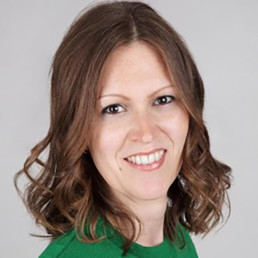
Written by Katie Friedman
Katie Friedman is an ex-Deputy Headteacher and Future Leader who now runs https://www.goldmindneurodiversity.com/ and is an accreditation coach with the MTPT project.
I was diagnosed as Autistic with Attention Deficit Disorder (ADD) this year, aged 40. When I first discovered my brain was different, I felt like an imposter – like I had only been autistic for five minutes but of course, I was born this way. What is new is the unlearning of unhelpful narratives thrown together in the absence of diagnosis. It feels like this late discovery has propelled me to the core of who I really am, past the layer of who I pretend to be and the layer of who I am scared I am.
Nearly three years ago, spurred on by a national leadership programme, I felt it was time to move on from the school I had been in for 10 years. I was promoted to a school whose Executive saw my ambition and verbal skills at interview. What they and I didn’t acknowledge was the disorganisation that had been masked by admin support. I went to expand my repertoire moving from a Teaching and Learning remit to be a Deputy Headteacher with responsibility for Behaviour and Safeguarding. The conditions for successfully making the leap in expertise were not there; soon after starting, the Headteacher and Assistant Principal in charge of Safeguarding went on long term sick leave; my husband who was sharing a lot of the childcare of our three young children, landed a promotion in London. It soon became clear I was out of my comfort zone and my support structures were dissolving at home and at school. I started to crumble much like the 1960s building I was working in. I couldn’t mask for long. I was overwhelmed, stopped sleeping and burnt out. When the decision finally became black and white: keep going and crash the car on the way to work or get well and parent my kids, I went to the doctors and got signed off. I now know that my experience of burn out was not simply the ‘glass cliff’ (where women often have to negotiate difficult roles in order to get promoted) and that my neurology also played a part.
After some mindfulness counselling and help from my union, I finally understood that walking away was wisdom and not failure and I decided to hand in my notice. I would have to do leadership differently and decided to train as a coach alongside part-time strategic leadership positions. I realised that ease and staying with not knowing (essential to coaching) were not things I had much practice of after 15 years in teaching and school leadership. Coach training helped me reconnect my mind and body, grounding me in the present and slowing my thinking to hold the space for others to think.
I got great feedback on my coaching course but everyone said I needed to be kinder to myself. I realised there was a block to my self-acceptance. A psychometric test pointed to an unusual brain with all my top strengths being in one category: strategic. These milestones of self-discovery led me to read about autism. Tiana Marshall’s Asperger traits in women profile took about three reads before I realised just how much the profile described my lived experience. Suspecting autism was not helpful however as I was subscribing to all kinds of ignorant stereotypes of deficit; no empathy, no emotions, no theory of mind, black and white thinking blah blah blah…..
I finally decided to brave a diagnosis. Just before the report was sent to me, I remember being really scared, a bit like the fear of social rejection; that I wouldn’t be autistic ‘enough’. I think I was scared that it would undermine my growing confidence in my intuition; that I was born this way and could stop trying so damned hard to do and be better. I needn’t have worried. Not only did I pass but ended up getting tested for ADHD which I had not been prepared for.
My brain had to process all this in the middle of an intense period of home school/ work juggle when my husband had to work away for a week. I started to see everything I had masked over before and suddenly understood why the difficulties were described as a ‘disability’. It’s really frustrating when you are well above average in some areas and under average in others. It can feel like you are two people. Since the external validation of diagnosis, frustration has become empathy. I am starting to recognise my sensory needs and propensity for overwhelm and take steps to manage. I am more accepting of my challenges and find support rather than getting frustrated or believing they will go away if I just try harder. I can really appreciate my strengths having seen my test scores for the cognitive assessment and have stopped dismissing them as things that everyone must have. I can finally accept myself and take care of my unique brain and manage my energy and concentration.
I am so glad I now know but I actually dread to think what rubbish I could have imbibed about myself if I had been labelled in the 80s and 90s. This insight is thanks to a well explained history of autism from the brilliant ally Steve Silberman in ‘Neurotribes’. Some adults from my generation have really shown their age with beauties like;
– ‘we are all on the spectrum’. This negates my experience and misinterprets the spectrum as linear.
– ‘Alright, Rain Man’. Wow.
– ‘You’re still my friend’. Actually, not anymore.
– ‘I always thought your dad and your aunt were weird’. Brilliant.
I am privileged to be married to someone who is well connected to his intuition, quietly confident, brilliant at admin, tidying and planning and for the most part, always up for the next adventure I instigate. I’m lucky to have many friends, educator colleagues and coaches in my life working in the self-acceptance, belonging, equality and diversity space. They are an army of people who own their labels and are willing to work hard in allyship with the intersectionality and inclusion of others. They have supported and championed me when I couldn’t. They have leant me their intuition when I couldn’t feel it, educated me, advocated for me, called me in and edited my work, applications and writing. @Clairerising, @itsaishathomas, @abitidball, @Angela_Browne, @comcoachingorg, and @DominiChoudhury I see you!
When I came out to the #actuallyautistic community on Twitter, I laughed through the tears as I realised I was expecting an outpouring of love and emotion from a tribe whose emotion comes when it comes not when someone asks for it. Integrity, challenge, drive and true kindness have been offered in abundance by people in the community and I know I am home.
Lockdown has made me realise that my kids are neurodivergent too and we are now in the process of their diagnosis. I hated the admin but it was very empowering to say ‘I am an ex-Deputy Headteacher and I am autistic with ADHD’ to the SENDco in my children’s school. It pays to be a privileged insider. It also pays to lead, bravely.
I coach leaders in education who want to do things differently and people who think differently (diagnosed and undiagnosed). Coaching works on the premise that we are all OK and whole and do not need ‘fixing’. The truth is we all need to change, not who we are but assumptions and perceptions we have so that we can see ourselves and our leadership clearly. Coaching helps us explore safely without fear of failure. Really good coaching helps us see our gifts and access our wisdom free from sabotage. 17% of the population are neurodivergent (Autistic, ADHD, Dyslexic and Dyspraxic) whether they know or not. My intuition is that there are far more neurodivergent people who think differently in education than we realise. My guess is that many of us deeply understand the process of learning and yet we are described from a place of deficit as ‘disorders’. Whilst there are challenges to thinking differently, there is brilliance which we can’t afford to overlook. I am often taken with the creative language Neurodivergent clients use or the way they can get to the crux of something quickly and how they can generate ideas about how to move forward. I also know that there will be many creative minds who have left education as their Schools would not be flexible around their needs.
Post-pandemic, we have proven that flexibility in work patterns and environment is possible and for some it may be desirable. People who are different and think differently are key to propelling the innovation needed to ensure education meets the changing needs of the 21st century, post-pandemic. The educational landscape has changed and neurodivergent trailblazers, liberated through understanding their neurodivergence can lead ahead of the curve if we nurture their talents.
You can find out more here: goldmindneurodiversity.com
Disability Awareness in Secondary PSHE
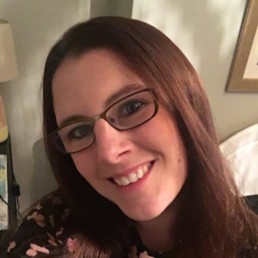
Written by Sophie McPhee
PSHE Coordinator in a West Midlands grammar school and Programme Director for the national Year 12 health and wellbeing enrichment programme Change Your Mind.
As committed life-long learners (I hope!), we sometimes get those ‘Oh wow!’ moments where suddenly, our eyes have been opened to a concept we’ve never considered before, and may even be obvious once we’re aware of it, but now we see part of the world in a completely new light. This is exactly what happened during a workshop Liz Wright (http://www.elizabethwright.net/) delivered at my school for our annual Mental Health Week in 2020, where she introduced to me and my students the social model of disability. Up to that point, the closest I had come to really thinking about disability in my 36 years was as a child, when my mum said she didn’t like a particular word beginning with ‘s’ commonly used as an insult when I was growing up in the 90s, because it was derived from the accepted term for people like her sister, who had cerebral palsy.
I feel ashamed to admit that I had to actually be taught to view disability as something created by society and not someone’s physical or mental difference – I had never even given disability the space in my brain for that thought to emerge independently. However despite my shame, it was a blessing, too, as it led to the firm decision during that workshop that disability awareness was not going to be a one-off session for an event week, but become a firm fixture in our PSHE curriculum. I will honestly say that I had never even considered doing this before – but isn’t that the point? If something is not within our lived experience – and I use that term broadly, to include having close contacts who are disabled – then the problem is not that we consciously think it doesn’t matter, but that it doesn’t even enter our head in the first place. I guess that this is a kind of unconscious bias – we only grant an issue more than a fleeting awareness if it relates to us in some way.
To be honest, I was also a little scared of covering this topic in my lessons, even if I did firmly feel that like me, my pupils should be woken up to – and the use of ‘woke’ is not accidental here, nor is it a pejorative – how they can be an ally to people with disabilities. There is absolutely such a thing as ‘non-disabled fragility’ (albeit not as catchy as the ‘white’ equivalent), whereby those of us without disabilities are so scared of getting it wrong, or speaking for or over those with lived experience. I am careful to point out in all my lessons that as a socially privileged woman, I am passing on what I have learned, but am by no means done with that learning. I made sure that once I had finished creating my lesson, I sent it to Liz and she kindly checked it over, patiently and gently pointing out a couple of places where I had used ableist language. It was a model of what educating others should look like – non-judgmentally uncovering and explaining problematic language which could have otherwise embedded problematic thinking.
I have now delivered this lesson to classes in Y9-11, some as live lessons, others as a pre-recorded version followed-up by a post-learning quiz. It appears that it has been successful, gaining an average rating of 4.4 out of 5 from students, most of whom said that they intend to change their language as a result of this lesson, both when referring to and talking to disabled people, and now know that common insult words are often derived from terms used in the past to refer to disability. Very often, pupils judge their lessons on whether they need to know the content for an exam or future career, but in PSHE, it’s not always about that, it’s about what others need them to know. We need, through these and other lessons which explore the vast range of human experience, to help pupils understand that creating a more inclusive and just society does relate to them. It might not do so always in a tangible sense, yet it weaves its way into not only our institutions, systems and processes, but also the quotidian, such as our face-to-face and social media interactions. Additionally, I would argue that there is most certainly a personal benefit to this kind of learning. It is incredibly enriching to understand better those whose experiences of life are different to yours. However, our pupils will only appreciate that benefit if they can first move away from viewing the purpose of education as leading to their future in purely material terms. And that is something all schools have in their power to influence.
You can access the disability awareness lesson at theother16hours.wordpress.com.
Getting Skilled and Diverse Governors on Boards

Written by Lydia Bower
Marketing and Communications Manager at education charity Governors for Schools.
The lack of diversity is, and has been for a long time, a problem on school governing boards.
A diverse governing board is a stronger board, reflecting school communities and the wider country. In 2020, over 30% of our volunteers were from BAME backgrounds, and over 65% were under 45, not to mention having different socio-economic backgrounds, and diverse skills, life experiences, and perspectives.
But these stats aren’t representative of most school boards. In 2020, the NGA’s annual governance survey found that 94% of governors and trustees who were surveyed identified as white. Only 1% of respondents identified as Black/ African/Caribbean/Black British, 2% identified as Asian/Asian British, and 1% identified as mixed or being of multiple ethnic groups.
The same survey found that only 1 in 10 governors and trustees were under 40 (11%), and only 2% were under 30. Boards need people of all ages and backgrounds to challenge group think and ensure robust decision making. Younger governors also have a perspective on education older governors simply can’t replicate. While older governors undoubtedly bring valuable skills and experience to the board, they don’t have recent experience of the education system, or know what it’s like to be young now.
We’ve created a quality mark for schools to use to show their commitment to finding skilled and diverse governors through an independent organisation. Displaying the mark is an assurance to all those in the school community that the board values diverse governance.
The survey figures are not reflective of the schools governors serve. The Department for Education’s school data for 2020 shows that in primary schools, 33.9% of pupils are of minority ethnic backgrounds. In secondary schools, 32.3% of pupils are of minority ethnic backgrounds. Of course, these figures will vary in different parts of the country, but the overall picture is one of governing boards failing to represent the communities they serve.
Boards that register vacancies with us have a higher chance of finding a new governor from a diverse background – in terms of both ethnicity and age. However, we understand that for many schools, while finding governors from diverse backgrounds is important, they also have a number of vacancies that need filling. Schools with more than one vacancy risk being left without the skills needed to run effectively.
The quality mark is still a useful tool for schools who find recruiting new governors a challenge. It shows that they understand the need for diverse governance, and have taken steps to address it.
In areas that aren’t very ethnically diverse, finding governors from BAME backgrounds can naturally be more difficult. However, the changes we saw in 2020, specifically the move to virtual governance, has opened up the possibility of having remote governors join boards. Although we expect to see governing boards resume face to face meetings in the next academic year, schools have had to adapt quickly to virtual meetings. This new way of meeting has led to an increase in the number of schools now considering remote governance and inviting those who don’t live locally to join the board. It’s an opportunity for boards to get the perspective and experience they need, and opens up hard-to-reach vacancies to a wider pool of volunteers.
Our webinar panel discussion in September 2020 discussed how to increase diversity on governing boards. The webinar featured a panel of educationalists and governance specialists talking about the steps boards can take to improve their diversity, and a key takeaway was not relying on personal contacts as this often results in recruiting people with similar backgrounds and experiences. By adding the quality mark to their website, schools can demonstrate their commitment to finding governors who can bring the skills, expertise, and diverse perspectives boards need to thrive.
You can read a summary of the information shared, and watch the webinar recording.
Has your school registered vacancies with Governors for Schools? Download the quality mark and show your school’s commitment to skilled and diverse governance.
Are you looking for new governors and want to prioritise finding volunteers who bring some diversity to the board? Register your governor vacancies with us online and we’ll search for a volunteer who best matches your requirements.

